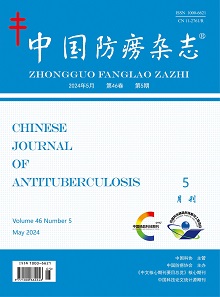Objective: To evaluate the effect of sugammadex on muscle relaxation recovery and rocuronium plasma concentration in elderly patients with pulmonary tuberculosis after lobectomy. Methods: Sixty-eight elderly patients undergoing pulmonary lobectomy for pulmonary tuberculosis under general anesthesia in Beijing Chest Hospital affiliated to Capital Medical University were selected and randomly divided into an observation group and a control group by computer-generated random sequence from September 20, 2021, to July 5, 2022, with 34 cases in each group. Four patients were excluded from the observation, and three from the control group. Thus 30 patients of the observation group and 31 patients of the control group were included in the analysis. Anesthesia was induced with 0.6 mg/kg rocuronium. TOFC=0 was maintained with rocuronium during surgery. When the second twitch (T2) reappeared at the end of the operation, the observation group was given 2 mg/kg sugammadex while the control group was given 0.05 mg/kg neostigmine and 0.025 mg/kg atropine to antagonize muscle relaxation. Liquid chromatography-tandem mass spectrometry was used to detect rocuronium plasma concentrations at T2 reappearance and 5 min and 30 min after muscle relaxation antagonism. The minutes to return to TOFR=0.7, 0.8, and 0.9 from T2 were recorded. Mean arterial pressure (MAP) and heart rate (HR) were recorded before muscle relaxation antagonism and at 1, 2, 3, and 5 min after antagonism, together with time of spontaneous respiratory recovery, extubation, and postoperative hospital stay. Results: The plasma concentrations of rocuronium in the observation group were (82.9±13.9) μg/ml and (68.1±9.9) μg/ml at 5 min and 30 min after muscle relaxation antagonism which were significantly higher than those in the control group ((66.1±19.7) μg/ml, (44.0±16.0) μg/ml), and the differences were statistically significant (t=3.837, 7.046, both P<0.001). The recovery time of TOFR to 0.7, 0.8, and 0.9 in the observation group were (2.0±0.9) min, (2.5±1.1) min, and (3.9±2.8) min, respectively, which were significantly shorter than those in the control group ((7.3±3.6) min, (10.2±5.1) min, (15.8±7.8) min), and the differences were statistically significant (t=-7.829, -8.087 and -7.878, all P<0.001). The spontaneous respiration recovery time, extubation time, and hospital stay in the observation group were (12.1±5.4) min, (15.5±6.6) min, and (7.1±2.1) d, respectively, lower than the control group ((17.4±7.3) min, (19.5±7.0) min, and (8.6±3.4) d, respectively). And the differences between the two groups had statistical significance (t=-3.215, -2.295, and -2.065; P=0.002, 0.025, and 0.043). Conclusion: Using sugammadex after thoracoscopic lobectomy in elderly patients with pulmonary tuberculosis could rapidly increase plasma inactive rocuronium concentration, rapidly reverse muscle relaxation, and significantly shorten respiratory recovery time, extubation time, and hospital stay.

 Wechat
Wechat